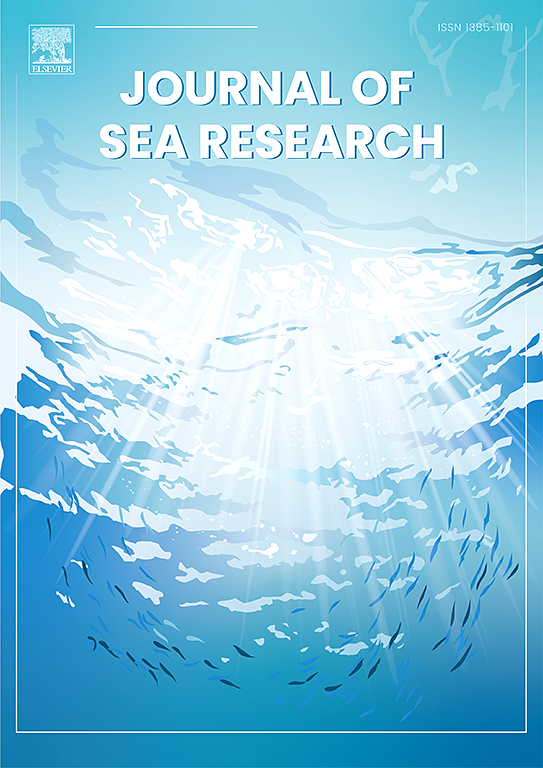Connectivity and larval drift across marine protected areas in the German bight, North Sea: Necessity of stepping stones
IF 2.9
4区 地球科学
Q2 MARINE & FRESHWATER BIOLOGY
引用次数: 0
Abstract
This study investigated the transport of European flat oyster (Ostrea edulis) larvae between two Marine Protected Areas in the North Sea: Borkum Reef Ground (BRG), where oysters were recently reintroduced, and Sylt Outer Reef (SOR). Additionally, we determined the source of oyster genetic material collected during cruises in 2022 between BRG and SOR. To achieve these goals, numerical simulations focusing on surface and depth-averaged water mass transport were conducted using the FESOM-C coastal ocean model with a forward/backward Lagrangian module. Surface drifter data were also analysed to examine surface transport and validate the model output. Our results indicate that typical summer wind conditions, along with tidal residual currents, support the transport of water masses and passive tracers from BRG to SOR. Surface water masses from BRG generally approach SOR from the south and west. However, BRG and SOR are usually connected over periods exceeding two weeks, even considering the fastest surface currents. Strong and persistent south-westerly winds, which are uncommon in summer, can accelerate this connection to under two weeks. Conversely, strong and persistent easterly or south-easterly winds, also rare in summer, can prevent some passive tracers originating from BRG from ever reaching SOR or the eastern North Sea. In the case of depth-averaged transport, significantly more time is required, with a minimum duration of eleven weeks to connect the domains. This connection could be facilitated by an intermediary habitat - as a stepping stone in the transition zone, if that provides suitable habitat for settlement and subsequent larval production.

北海德国湾海洋保护区的连通性和幼虫漂移:垫脚石的必要性
本研究调查了欧洲平牡蛎(Ostrea edulis)幼虫在北海两个海洋保护区之间的运输:最近重新引入牡蛎的Borkum Reef Ground (BRG)和Sylt Outer Reef (SOR)。此外,我们确定了2022年在BRG和SOR之间的游轮期间收集的牡蛎遗传物质的来源。为了实现这些目标,使用FESOM-C沿海海洋模式进行了表面和深度平均水团输运的数值模拟,并采用了正/反拉格朗日模块。还分析了地面漂船的数据,以检验地面运输并验证模型的输出。我们的研究结果表明,典型的夏季风条件以及潮汐残余流支持水团和被动示踪剂从BRG到SOR的运输。来自BRG的地表水团通常从南部和西部接近SOR。然而,BRG和SOR的连接时间通常超过两周,即使考虑到最快的表面电流。强烈而持续的西南风,在夏季并不常见,可以加速这种联系在两周内。相反,夏季也罕见的持续强劲的东风或东南风会阻止一些来自BRG的被动示踪剂到达SOR或北海东部。在深度平均传输的情况下,需要更多的时间,连接域的最少持续时间为11周。中间生境可以促进这种联系,作为过渡区的垫脚石,如果它为定居和随后的幼虫生产提供合适的生境。
本文章由计算机程序翻译,如有差异,请以英文原文为准。
求助全文
约1分钟内获得全文
求助全文
来源期刊

Journal of Sea Research
地学-海洋学
CiteScore
3.20
自引率
5.00%
发文量
86
审稿时长
6-12 weeks
期刊介绍:
The Journal of Sea Research is an international and multidisciplinary periodical on marine research, with an emphasis on the functioning of marine ecosystems in coastal and shelf seas, including intertidal, estuarine and brackish environments. As several subdisciplines add to this aim, manuscripts are welcome from the fields of marine biology, marine chemistry, marine sedimentology and physical oceanography, provided they add to the understanding of ecosystem processes.
 求助内容:
求助内容: 应助结果提醒方式:
应助结果提醒方式:


